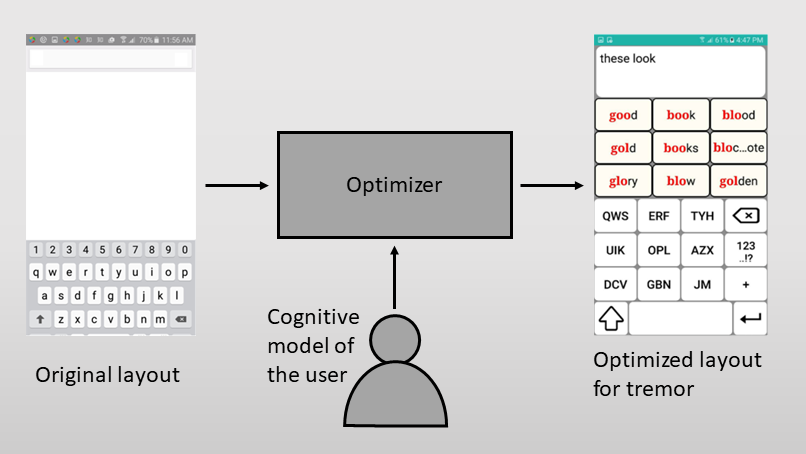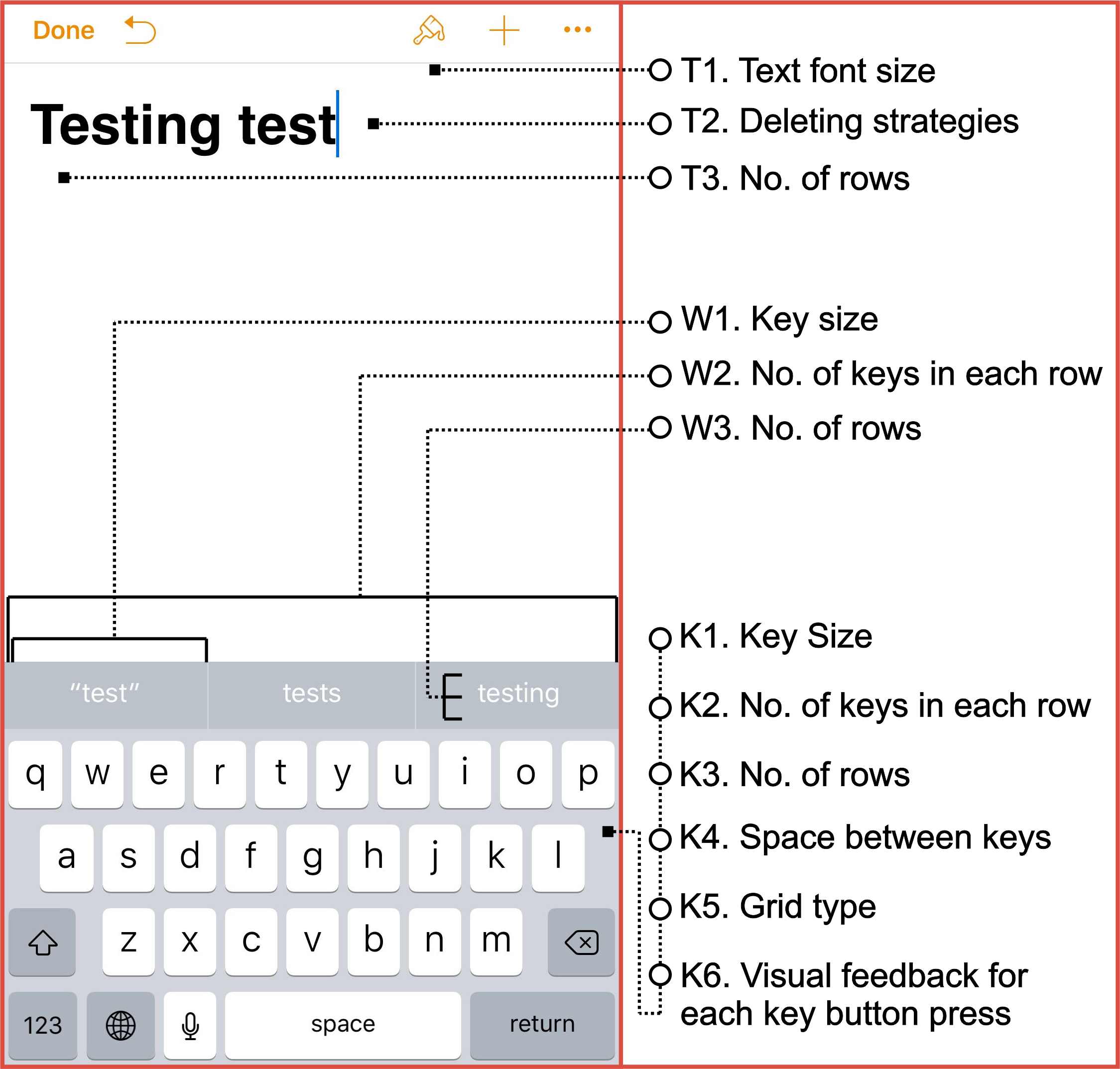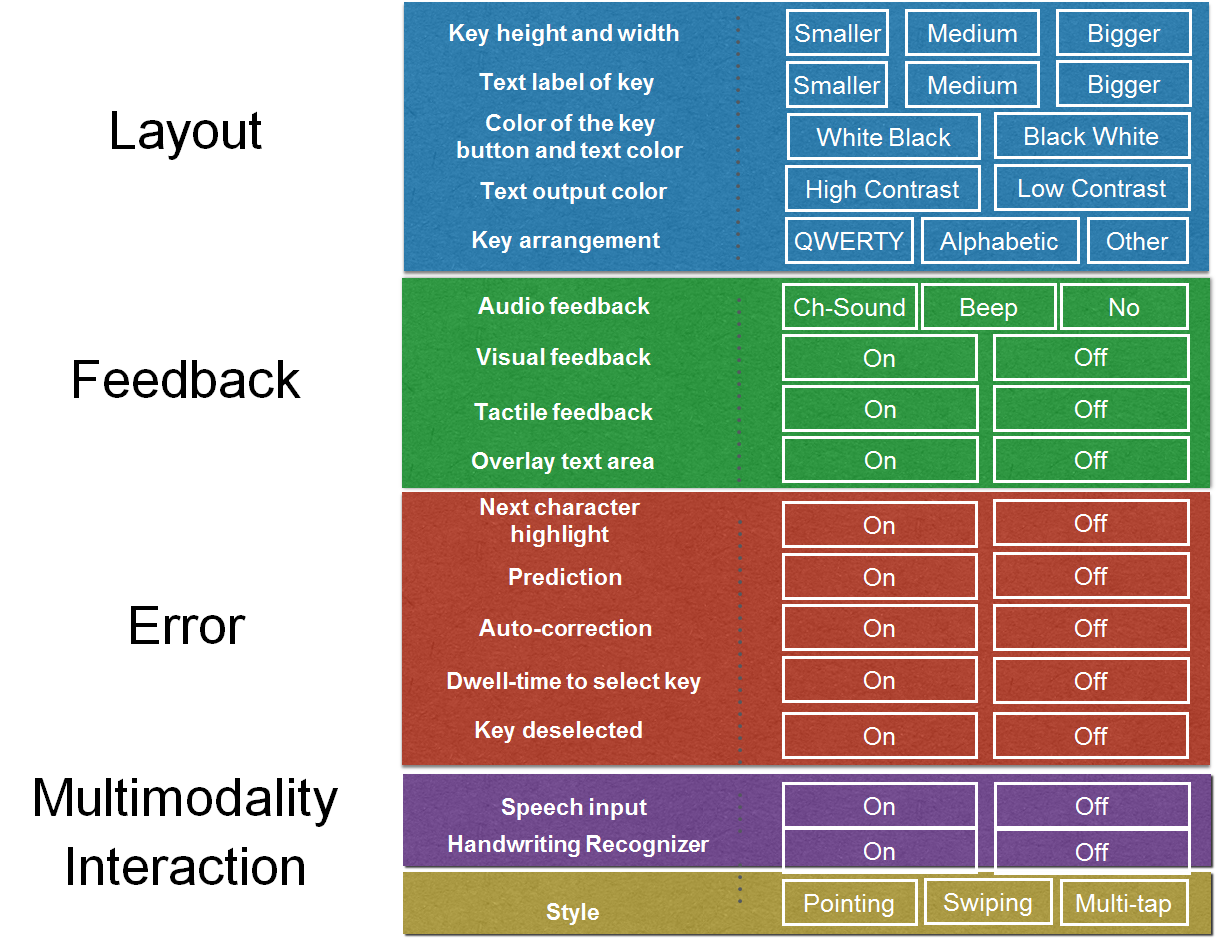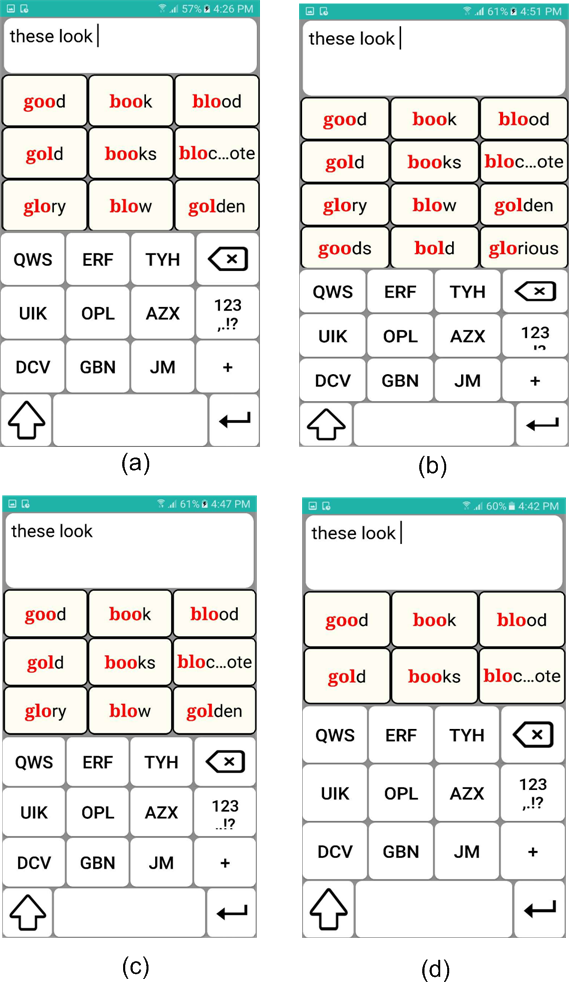User interfaces are usually designed to an average user. However, some users have disabilities or deficits that make standard user interfaces difficult to use. We propose interface optimization as a tool to solve this problem. Interface optimization means changing the user interface to suit the individual needs of the user. Our proposed optimization process has many benefits:

The paper examines a computational design approach for improving user interface designs for people with sensorimotor and cognitive impairments. In ability-based optimization, designs are created by an optimizer and evaluated against model of an individual performing tasks. Alternative designs can be explored and adapted to an individual’s abilities. In this paper, we explore text entry on touchscreen devices as the case. Individual abilities are parametrically expressed as part of a task-specific cognitive model, and the model estimates how the individual might adapt her interaction to the task. Optimized designs can potentially improve speed and reduce error for users with tremor and dyslexia. Ability-based optimization does not necessitate extensive data-collection and could be applied both automatically and manually by users, designers, or caretakers.

PDF, 0,5 MB
Sarcar, S., Jokinen, J., Oulasvirta, A., Wang, Z., Silpasuwanchai, C., Ren, X., 2018.
Ability-Based Optimization of Touchscreen
Interactions.
IEEE Pervasive Computing 17.1, pp. 15-26.
@article{sarcar2018ability,
title={Ability-Based Optimization of Touchscreen Interactions},
author={Sarcar, Sayan and Jokinen, Jussi PP and Oulasvirta, Antti and Wang, Zhenxin and Silpasuwanchai, Chaklam and Ren, Xiangshi},
journal={IEEE Pervasive Computing},
volume={17},
number={1},
pages={15--26},
year={2018},
publisher={IEEE}
}
Data:
Media:



For questions and further information, please contact:
Jussi P.P. Jokinen
Email:
jussi.jokinen (at) aalto.fi
Phone:
+358 45 196 1429
Email:
sayan.sarcar (at) kochi-tech.ac.jp
Phone:
+81 90 94513410
Email:
xsren (at) acm.org
Acknowledgements:This work has received funding from the joint JST–AoF project "User Interface Design for the Ageing Population" (AoF grant 291556) as an activity of FY2014 Strategic Inter- national Collaborative Research Program (SICORP), and from the European Research Council (ERC) under the European Union’s Horizon 2020 research and innovation programme (grant agreement 637991).